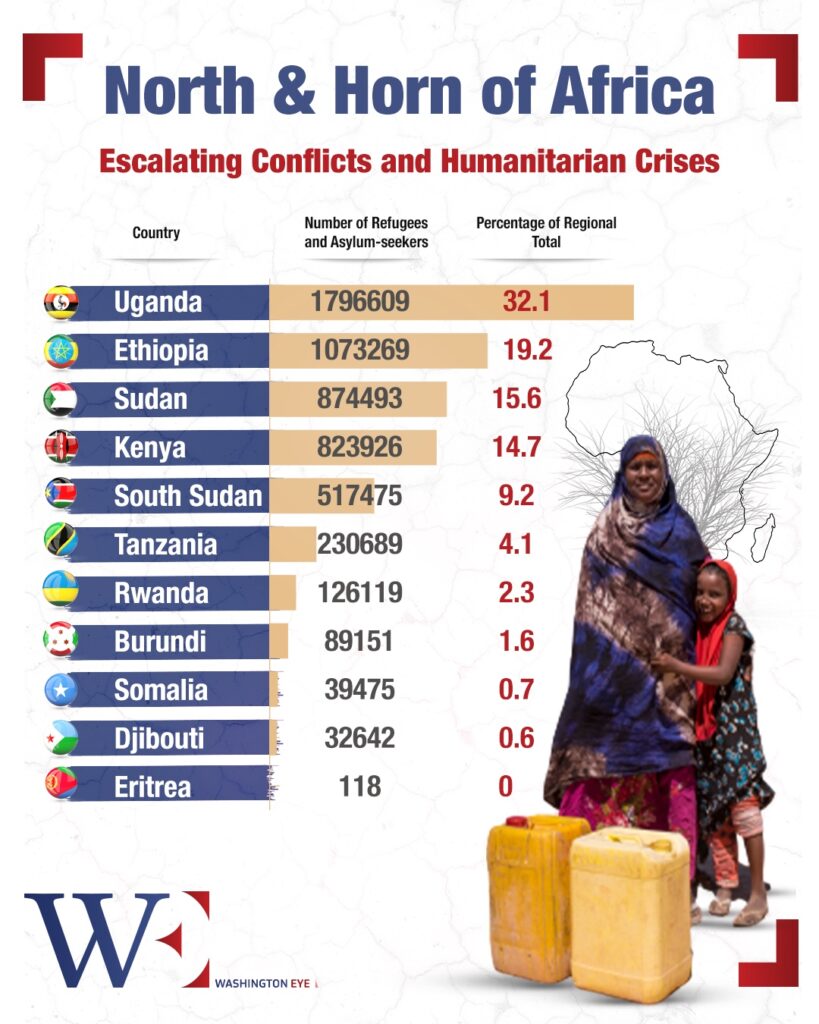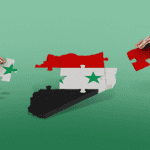The North and Horn of Africa regions are grappling with escalating conflicts and worsening humanitarian crises, threatening millions of lives and destabilizing one of the most fragile parts of the continent. The situation has drawn international attention as violence continues to spiral, exacerbating poverty, displacement, and food insecurity.
In Sudan, the conflict between the Sudanese Armed Forces (SAF) and the Rapid Support Forces (RSF) has plunged the country into chaos since it erupted in April 2023. According to the United Nations Office for the Coordination of Humanitarian Affairs (OCHA), over 5.3 million people have been displaced, with nearly 1.2 million seeking refuge in neighboring countries such as Chad, South Sudan, and Egypt. The ongoing violence has disrupted critical infrastructure, leaving over 25 million people in need of humanitarian assistance.
Meanwhile, Ethiopia is grappling with the aftermath of the Tigray conflict that ended in November 2022. Although the peace agreement brought some respite, the situation remains fragile, with ethnic tensions and armed clashes reported in Oromia and Amhara regions. The International Crisis Group warns that renewed violence could destabilize the entire Horn of Africa, further complicating efforts to rebuild and reconcile.
Somalia continues to be plagued by its decades-long battle against the extremist group al-Shabaab. Recent months have seen intensified attacks on civilians and security forces, resulting in hundreds of casualties. The Somali government’s “Operation Black Lion” aims to reclaim territories, but the insurgency remains resilient. More than 7.8 million people face acute food insecurity in Somalia, compounded by the worst drought in 40 years, according to the World Food Programme (WFP).
Humanitarian Crises and Displacement
The ripple effects of these conflicts are most evident in the alarming humanitarian crises across the region. The UN High Commissioner for Refugees (UNHCR) reports that the Horn of Africa hosts over 9 million internally displaced persons (IDPs) and 4.7 million refugees and asylum seekers, one of the highest concentrations globally. Food insecurity has reached catastrophic levels. The WFP’s latest analysis indicates that over 62 million people across the North and Horn of Africa are food insecure. In Sudan alone, 20.3 million people more than 42% of the population are experiencing crisis-level hunger or worse.
Children are among the hardest hit. UNICEF estimates that over 10 million children are at risk of acute malnutrition across the Horn of Africa, with 1.3 million requiring urgent treatment for severe malnutrition. “The combination of conflict, climate shocks, and economic instability has created a perfect storm for vulnerable populations,” said Catherine Russell, UNICEF’s Executive Director, in a recent statement.
Despite the urgency, the international response has been hindered by funding shortfalls and access challenges. The UN’s 2023 humanitarian appeal for the Horn of Africa sought $7 billion but remains only 30% funded. Aid agencies have warned that without immediate support, millions of lives are at risk. “We are facing a crisis of unprecedented scale,” said Martin Griffiths, the UN’s Under-Secretary-General for Humanitarian Affairs and Emergency Relief Coordinator. “The international community must step up with sustained and substantial assistance.”
Regional organizations such as the African Union (AU) and the Intergovernmental Authority on Development (IGAD) are also actively engaged. However, their efforts are often undermined by political complexities and insufficient resources. IGAD Secretary-General Workneh Gebeyehu has called for “a united regional approach” to address both immediate needs and long-term stability. Compounding the crises is the impact of climate change, which has intensified droughts, floods, and resource scarcity. The Horn of Africa has experienced five consecutive failed rainy seasons, a phenomenon scientists attribute to climate change. The Famine Early Warning Systems Network (FEWS NET) predicts that the ongoing El Niño event will exacerbate flooding and displacement in the coming months.
In Sudan, heavy rains have triggered devastating floods in conflict-affected regions, further complicating humanitarian operations. Ethiopia and Somalia are also bracing for the dual threats of drought and floods, which could worsen food insecurity and displacement. The crises in the North and Horn of Africa are not merely humanitarian but deeply rooted in political instability and governance failures. Corruption, weak institutions, and power struggles have hampered effective responses to the crises. The inability to address underlying grievances has fueled resentment and violence, creating a cycle of conflict and suffering. In Sudan, attempts at international mediation have faltered as warring factions refuse to compromise. Ethiopia’s federal government faces mounting criticism over its handling of ethnic tensions. Meanwhile, Somalia’s fragile federal system continues to struggle against al-Shabaab’s insurgency.
Voices from the Ground
For those living through these crises, the stories are harrowing. Amina, a mother of five from Mogadishu, shared her struggles: “We fled our home because of al-Shabaab, but now we face hunger and disease in the camp. We need help, but it never comes in time.” Similarly, Hassan, a displaced farmer from Sudan’s Darfur region, recounted his ordeal: “The fighting destroyed my farm and my village. We’ve lost everything. My children haven’t eaten properly in days.”
Experts emphasize the need for a multi-pronged approach to address the crises. Immediate humanitarian aid must be coupled with efforts to resolve conflicts, rebuild governance structures, and adapt to climate challenges. Strengthening regional cooperation and ensuring inclusive peace processes are critical to breaking the cycle of violence. The international community has a moral obligation to act decisively. As Griffiths warned, “Failure to respond now will not only cost lives but also undermine global peace and security.” While the challenges are immense, so is the resilience of the people in the North and Horn of Africa. With adequate support and sustainable solutions, there remains hope for a better future in these troubled regions.
















